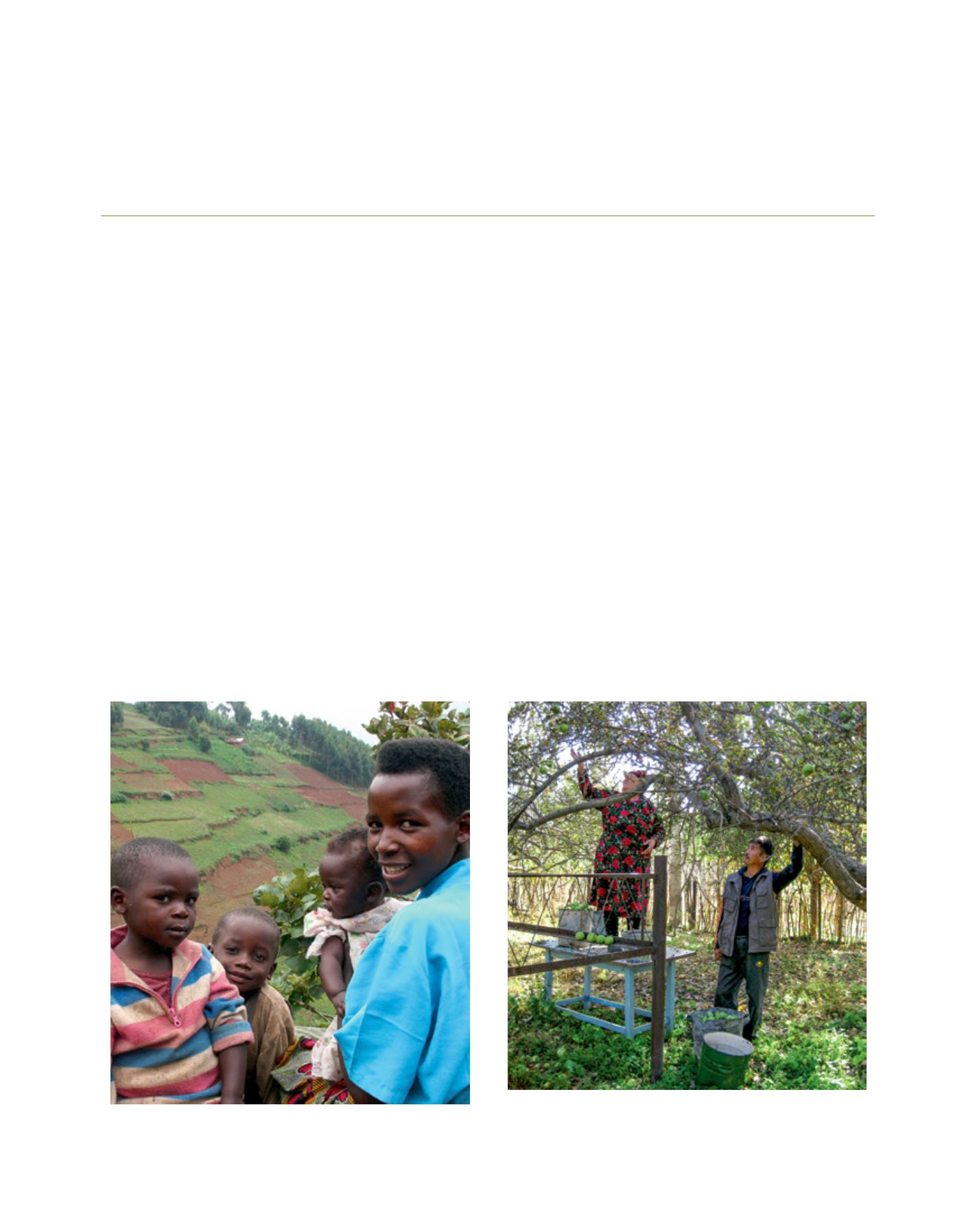

[
] 93
Agricultural biodiversity: an essential asset
for the success and resilience of family farming
P. Eyzaguirre and M. Ann Tutwiler, Bioversity International
T
he International Year of Family Farming places
family farmers at the centre of goals, policies and
programmes to end hunger and improve the liveli-
hoods and well-being of the rural poor. These goals and
objectives are to be realized at a time when the world’s
stock of natural resources, land, water and biodiversity
are being diminished, contaminated and eroded.
1
Fortunately, small-scale family farms are no longer viewed
as anachronistic or as barriers to agricultural development
– their potential to contribute to food and nutrition security
is now recognized. Furthermore, family farms have a unique
advantage in improving the quality of diets, and reducing risks
in the food systems of developing countries while protecting
the environment and biodiversity. The focus on family farms
as global partners in achieving these multiple objectives leads
us to examine more concretely the nature of family farming
and the specific assets and resources that family farmers can
access and deploy.
There is preliminary evidence that the two most important
assets available to small family farms are gendered knowledge
and agricultural biodiversity.
2
Based on examples and evidence
from family farms and production landscapes managed by
farm households around the world, there is a strong case in
favour of policies that strengthen the knowledge base, knowl-
edge exchange and access to technology among farmers that
manage agricultural biodiversity. Strengthened, family farms
are able to realize the potential of agricultural biodiversity to
provide better income, opportunities for entrepreneurship,
more diverse and healthier foods, resilient landscapes, and
more sustainable food production over time.
The International Year of Family Farming (IYFF), defines
family farming as “a means of organizing agricultural,
forestry, fisheries, pastoral and aquaculture production which
is managed and operated by a family and predominantly
reliant on family labour, including both women’s and men’s.
The family and the farm are linked, co-evolve and combine
economic, environmental, social and cultural functions.”
3
A Ugandan farmer with her children in an agricultural landscape where each
square belongs to a different farmer
Harvesting apples, Kyrgyzstan. Bioversity International is promoting the
conservation of biodiversity in fruit tree species in Kazakhstan, Kyrgyzstan,
Tajikistan, Turkmenistan and Uzbekistan
Image: Bioversity International/Paola de Santis
Image: Kuban Turgunbaev
D
eep
R
oots
















